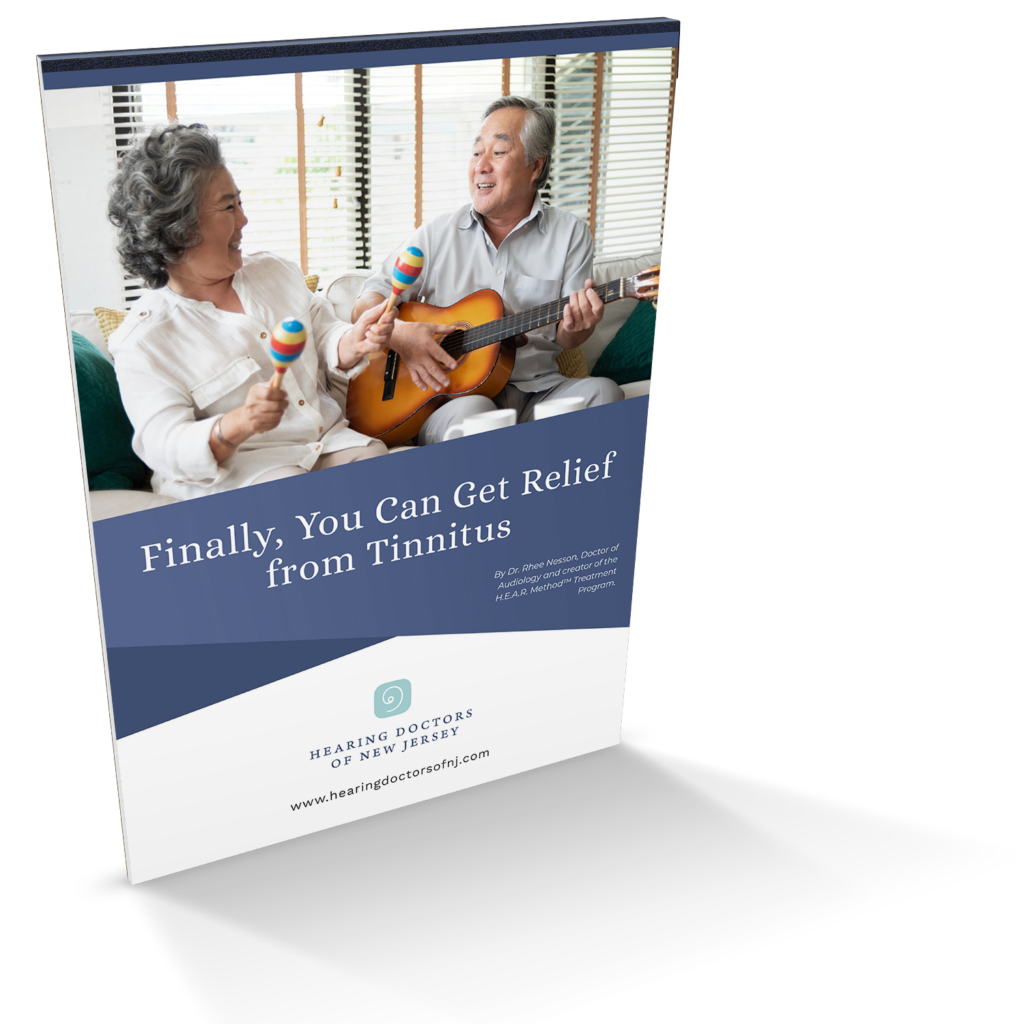
Finally, You Can Get Relief from Tinnitus
Why Almost Everyone is Dead Wrong About Tinnitus, or “Ringing in the Ears.” Including Why Magic Pills & Surgery Don’t Stop the Ringing!
Click below to request your free report that will get you started!
Privacy Policy: We hate spam and promise to keep your information safe
What is Tinnitus?
Tinnitus is defined as a sensation of sound in your ears, sometimes in your head. Each person with Tinnitus has a different sound experience; for some its ‘ringing’, some it’s a ‘whooshing’, and for others it sounds like the inside of a ‘seashell’. Tinnitus is experienced by 80% of people with hearing loss. Some of these people only notice the Tinnitus in a quiet room, whereas many others experience the sound all day long – and it can interfere with daily life.
The prevailing theory of the cause of Tinnitus for most people who experience it called the ‘Central Gain’ theory. The ‘sound in your ears / head’ is the result of a loss of proper stimulation present in normal hearing individuals. This can happen even when there is “no hearing loss” measured on standard hearing tests – although the more advanced testing we do often documents the breakdown in the neural connections from ear to brain in these cases. Because the brain is not properly stimulated by the ear, the brain attempts to make up for the missing stimulation, which results in over-exciting the system. This neurological phenomenon has been likened to ‘phantom limb’ experience.
Fortunately, there is a treatment option. In fact, the only FDA (Food and Drug Administration) approved treatment option for Tinnitus is to provide the brain with the proper stimulation. There is no pill, no surgery, no other available option approved to treat Tinnitus. Effective treatment options are available for people with hearing loss, and for individuals who have been told they have “normal hearing” based on standard testing. Most patients report a significant reduction in their daily Tinnitus experience – some even say the ‘ringing is gone during the day’.
Start By Entering Your Information to Tell Us Where To Email Your FREE Report...
Tinnitus Sendout
DR. RHEE NESSON attended the University of Michigan where she received her undergraduate degree. She went on to attend Hunter College and then the Graduate Center of New York where she earned her Doctorate in Audiology. She is a member of professional organizations, including ASHA (American Speech-Hearing Association) and AAA (American Academy of Audiology). Ever since her grandmother was diagnosed with dementia and hearing loss, she has been interested in the connection between how the ears and brain work and has concentrated much of her independent continuing education in that area of study.
By applying the latest research along with cutting edge technology, she focuses on treating hearing loss early to improve one’s overall health and cognitive function to significantly reduce the risk of developing dementia. By using the gold-standard of best practice audiology, Dr. Nesson developed the proprietary H.E.A.R. Method™ Treatment Program which creates customized hearing solutions for each person she treats so that they stop saying “what” – guaranteed.
Learn more at:
(973) 577-4100

